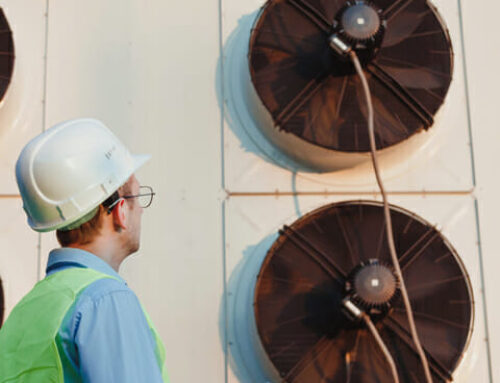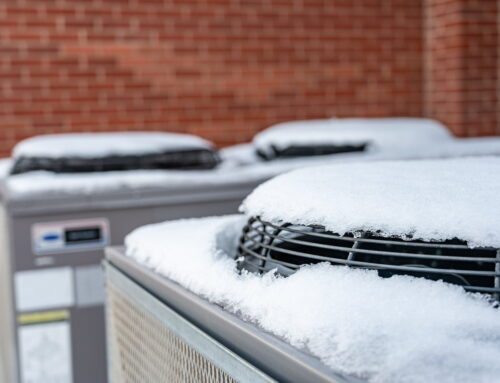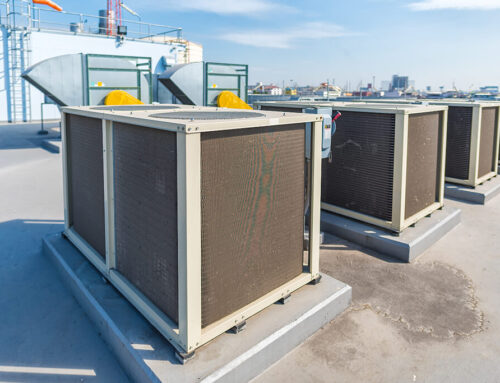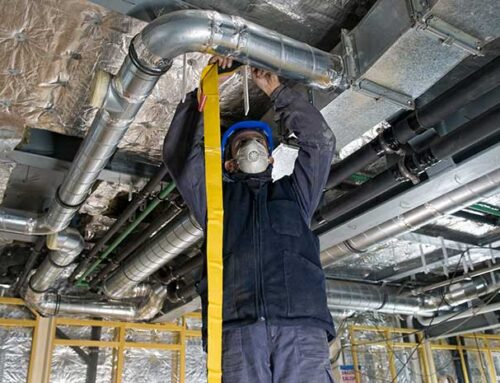Did you know that nearly 30% of energy used in commercial buildings is wasted due to poor insulation, resulting in reduced HVAC efficiency, increased heat loss and heat transfer, and lower cost savings? That’s a hefty chunk of change in cost savings and energy savings slipping right through the cracks on utility bills, offering many benefits! Proper insulation isn’t just about keeping your space cozy; it’s a game-changer for boosting your HVAC system’s efficiency, reducing energy waste, and minimizing heat loss through heat transfer for significant energy savings. Imagine cutting down those eye-watering utility bills through energy savings and energy efficiency, reducing energy consumption and energy waste, and giving the planet a high-five at the same time. Let’s dive into why sealing your building up tight is crucial for energy efficiency, reducing heat transfer, and squeezing every bit of value out of your commercial HVAC investment through regular maintenance.
Importance of Proper Insulation in Commercial HVAC Efficiency
Energy Savings
Proper insulation and sealing play a crucial role in reducing energy consumption by improving HVAC efficiency and minimizing heat transfer. It does this by minimizing heat loss or gain. When your building is well-insulated and properly sealed, it requires less heating in the winter and less cooling in the summer, enhancing HVAC efficiency and reducing energy waste.
This efficiency leads to significant savings on energy bills. Buildings with good insulation and sealing have shown to use up to 40% less energy for heat and hvac efficiency than those with poor insulation. This not only saves money but also conserves resources.
Operational Costs
Good insulation improves your HVAC system’s efficiency. It means your HVAC system doesn’t work as hard to maintain comfortable temperatures, thanks to improved efficiency and sealing. This results in lower operational costs over time.
HVAC systems, with their sealing requirements, are among the largest consumers of energy within commercial buildings. By enhancing thermal resistance through proper insulation and sealing, businesses can see a reduction in their monthly expenses and improve HVAC efficiency.
Equipment Lifespan
Another benefit of proper insulation and sealing is that it extends the lifespan of HVAC equipment. With reduced workload comes less wear and tear on the system components, including sealing elements.
Systems that operate under stress due to poor insulation and sealing often fail sooner than expected. Conversely, systems supported by high-quality insulation and sealing experience fewer breakdowns and require less frequent replacements.
Benefits of Investing in Commercial HVAC Insulation
Enhanced Comfort
Investing in quality insulation and sealing for your commercial HVAC system brings many benefits. One key advantage is enhanced indoor air quality and comfort levels through sealing. Proper insulation and sealing keep temperatures steady, avoiding the discomfort of hot or cold spots.
This consistency in sealing ensures that employees and customers alike enjoy a comfortable environment. It also helps in reducing health issues linked to poor air quality by sealing. Thus, it’s not just about comfort but also well-being.
Energy Savings
Another significant benefit is the savings on energy bills over time through sealing. With proper insulation and sealing, your HVAC system doesn’t have to work as hard to maintain desired temperatures. This efficiency, enhanced by sealing, leads to lower energy consumption and cost savings.
The initial investment might seem high, but the long-term savings are substantial. Businesses can see reduced operational costs within months of upgrading and sealing their insulation.
Environmental Impact
Lastly, investing in good insulation and sealing contributes to environmental sustainability by reducing carbon footprint. Less energy used means fewer greenhouse gas emissions from power plants supplying electricity.
Types of Building Insulation for Commercial HVAC Efficiency
Fiberglass Insulation
Fiberglass is a popular choice. It traps air, slowing down heat flow. Buildings use it in walls and roofs.
Mineral wool works similarly. It’s made from natural or synthetic fibers. Both are great for thermal resistance.
Spray Foam
Spray foam expands to fill gaps. This makes it perfect for sealing leaks around pipes and vents.
Rigid foam boards add extra insulation layers. They’re used on floors and ceilings where space allows.
Reflective Insulation
Reflective materials bounce back sunlight. This reduces heat transfer during hot months.
It’s often used for sealing in attics or roofs facing direct sun exposure.
-
Pros: Effective against radiant heat.
-
Cons: Less effective without proper air gap installation.
In choosing the right insulation and sealing type, consider your building’s specific needs.
-
For broad coverage, fiberglass or mineral wool is ideal.
-
Tight spaces benefit from spray foam or rigid boards.
-
Sun-exposed areas need reflective materials.
Each type boosts commercial HVAC efficiency differently but effectively. Remember, combining types can optimize energy savings even more.
Assessing the Effectiveness of Insulation in Commercial Buildings
Energy Audits
Conducting energy audits is a critical first step. These audits help building owners identify where their insulation and sealing might be lacking. By pinpointing these weaknesses, they can make informed decisions on improvements.
During an audit, experts examine various parts of a building, including sealing. They look at walls, roofs, sealing, and other areas that could let heat escape. This process helps reduce energy bills significantly by targeting and sealing problem areas directly.
Thermal Imaging
Using thermal imaging is another effective method. It lets us see exactly where heat loss occurs in real-time. This technology paints a clear picture of how well insulation performs under different temperatures.
Thermal cameras detect variations in temperature across surfaces. Areas with poor insulation show up as warmer spots during cooler months and vice versa. This visual aid is invaluable for understanding how to enhance overall performance and cut down utility bills.
R-Values Calculation
Calculating R-values measures the effectiveness of insulation materials used in construction.
-
The higher the R-value, the better the material insulates.
-
Different materials have varying R-values depending on their type and thickness.
Understanding these values is crucial for business owners aiming to improve HVAC efficiency in commercial buildings. Properly insulated buildings maintain more consistent indoor temperatures while reducing consumption and environmental impact.
Implementing Strategies to Improve Commercial HVAC System Efficiency
High-Performance Insulation
Upgrading insulation is a key step. High-performance materials keep buildings warmer in winter and cooler in summer. This reduces the energy consumption of HVAC systems.
Facility managers often overlook this simple upgrade. Yet, it’s crucial for energy efficiency. Better insulation means less energy waste and more savings.
Smart Thermostats
Integrating smart thermostats offers better control over temperatures. These devices adjust heating and cooling based on real-time needs. They can even learn from your habits over time.
This technology leads to significant energy savings. It cuts down unnecessary heating or cooling when areas are unoccupied. Plus, facility managers can monitor and adjust settings remotely, saving both energy and time.
Sealing Ductwork
Duct sealing is another effective way to boost HVAC efficiency. Leaks in ducts lead to air loss, forcing systems to work harder than necessary.
Sealing these leaks prevents drafts and inefficiency. It’s one of the most cost-effective ways to improve a system’s performance.
Ensuring Proper Installation and Sealing for Enhanced HVAC Efficiency
Certified Professionals
Hiring certified professionals is crucial. They ensure your HVAC system’s installation meets industry standards. This step guarantees optimal performance from the start.
Certified technicians understand the complexities of heating and cooling systems. They install equipment correctly, ensuring efficient operation. Their expertise also helps in maintaining a consistent temperature across different spaces.
Quality Materials
Using quality sealants and insulating materials is essential around ducts and vents. It prevents energy loss, enhancing overall efficiency.
Proper sealing keeps conditioned air inside, making spaces more comfortable. It reduces the workload on your HVAC system too. This leads to lower energy bills and extends the lifespan of your equipment.
Regular Checks
Regularly checking for gaps or leaks in insulation is vital for maintaining efficiency. Even small leaks can significantly impact performance over time.
Fixing these issues promptly helps keep heating and cooling costs down. It also ensures that your facility remains at a comfortable temperature year-round.
Regular Maintenance and Inspection for HVAC Insulation and Sealing
Annual Inspections
Regular maintenance is crucial. It ensures your system runs smoothly. Scheduling annual inspections helps assess the insulation’s condition. This can reveal hidden issues before they worsen.
During these inspections, professionals look for signs of wear and tear. They also check if the insulation still performs well. This step is vital for maintaining efficiency in commercial HVAC systems.
Filter Management
Clean filters are essential for airflow efficiency. Dirty filters restrict air flow, making the system work harder. This increases energy consumption.
Replacing or cleaning HVAC filters regularly is a simple yet effective way to keep your system efficient. It also improves indoor air quality, benefiting worker safety.
Humidity Control
Moisture can damage insulation over time. Monitoring humidity levels is important to prevent this damage.
High humidity can lead to mold growth in the insulation materials, reducing their effectiveness. Keeping an eye on moisture levels helps maintain optimal performance and prevents costly repairs down the line.
-
Bullet list:
-
Schedule annual inspections.
-
Replace or clean filters as needed.
-
Monitor indoor humidity levels.
Common Mistakes to Avoid in HVAC Insulation and Sealing
Poor Assessment
Many businesses rush the installation of their HVAC systems without a proper assessment. This haste can lead to significant inefficiencies. A thorough evaluation ensures that the system matches the building’s needs.
Skipping this critical step often results in selecting an inadequate insulation type or thickness. The consequences are higher energy bills and less comfort for occupants. Always start with a detailed assessment to avoid these pitfalls.
Low-Quality Materials
Choosing cheap, low-quality insulation materials is tempting for immediate savings. However, this is a false economy. These materials degrade faster than their high-quality counterparts.
Degradation means more gaps and less efficiency over time. It leads to increased costs as you replace materials sooner than expected. Invest in quality from the start for long-term benefits.
Ignoring Maintenance
Regular maintenance keeps your HVAC system running smoothly. Yet, many overlook this necessity after installation.
Neglecting maintenance leads to decreased performance and higher energy use over time. It allows small issues like minor gaps or wear and tear to escalate into costly repairs or replacements down the line.
Remember, consistent care prevents most common mistakes related to insulation and sealing efficiency.
Closing Thoughts
Proper insulation is the unsung hero of commercial HVAC efficiency, playing a pivotal role in slashing energy bills and boosting comfort levels. Imagine your building as a thermos rather than a sieve, keeping the cool in during scorchers and warmth during cold snaps. By investing in quality insulation, assessing its effectiveness regularly, and dodging common installation blunders, you’re not just saving pennies; you’re also championing sustainability. It’s like putting your HVAC system on a diet—it works less for more comfort, trimming down those hefty energy bills.
So, what’s your next move? Don’t let your HVAC sweat it out or shiver in the cold. Take action by reviewing your insulation strategy today. A stitch in time saves nine, ensuring your commercial space isn’t just efficient but also eco-friendly. Remember, it’s not just about the immediate savings but also about contributing to a greener planet. Let’s make every joule count!






